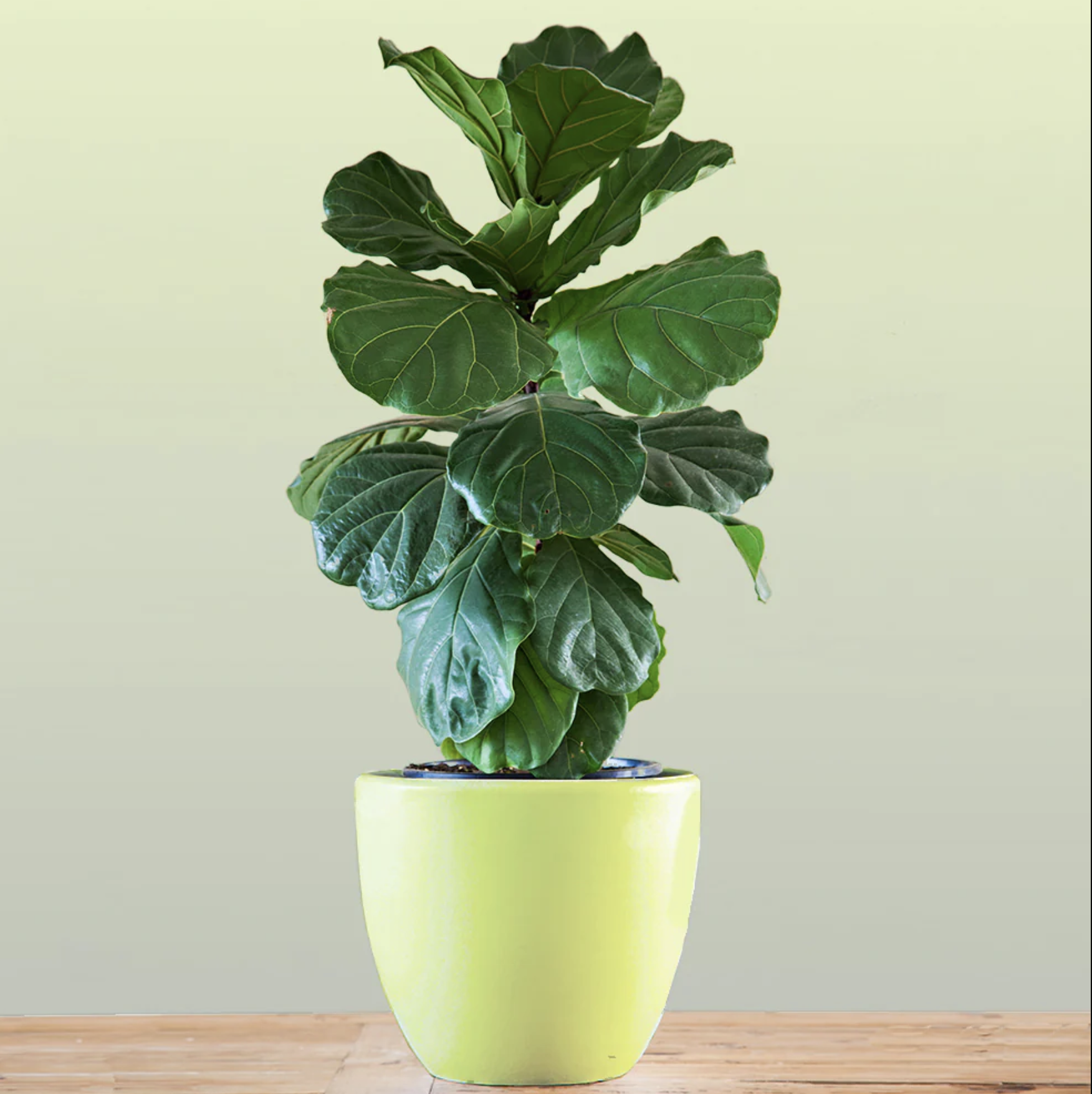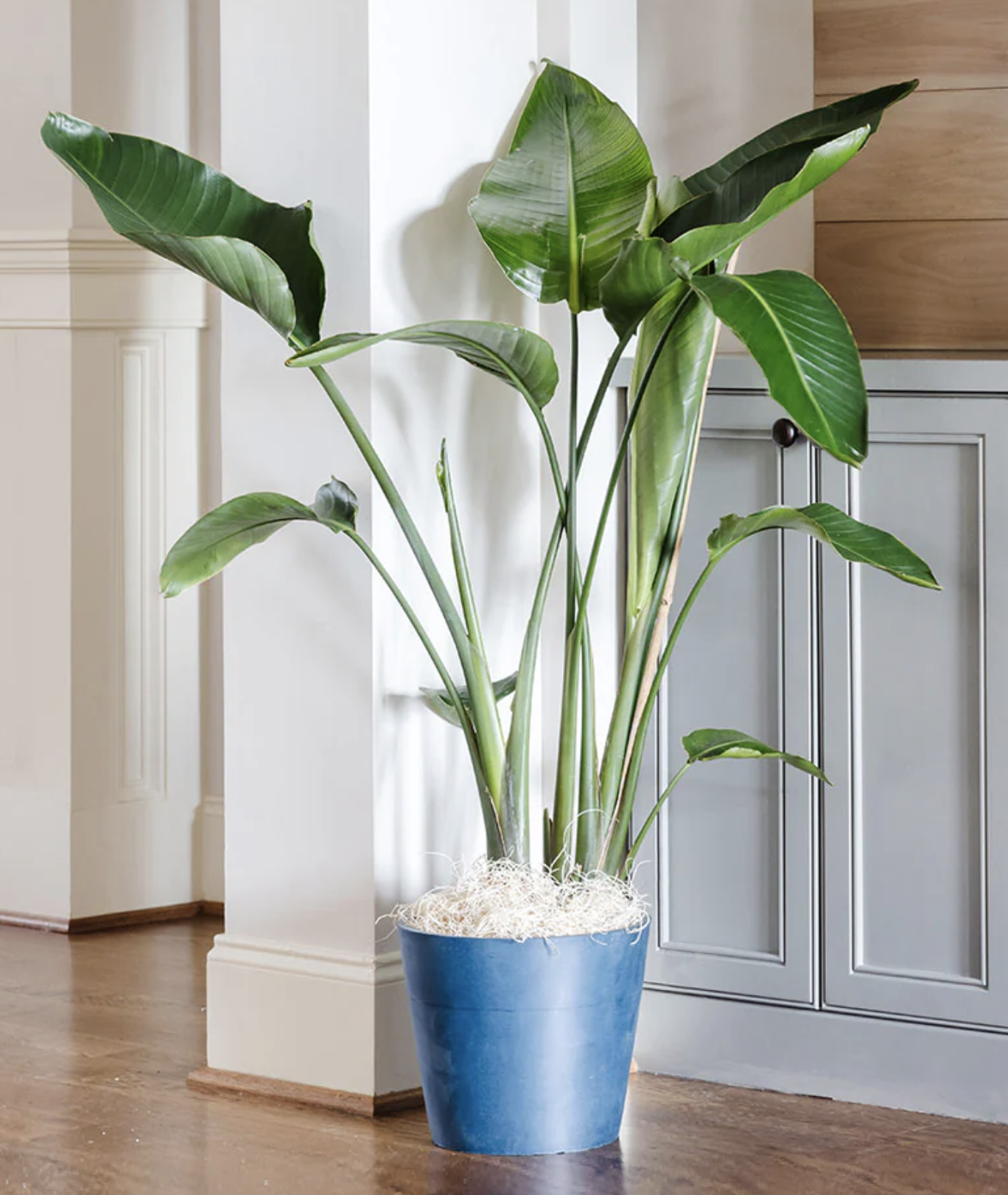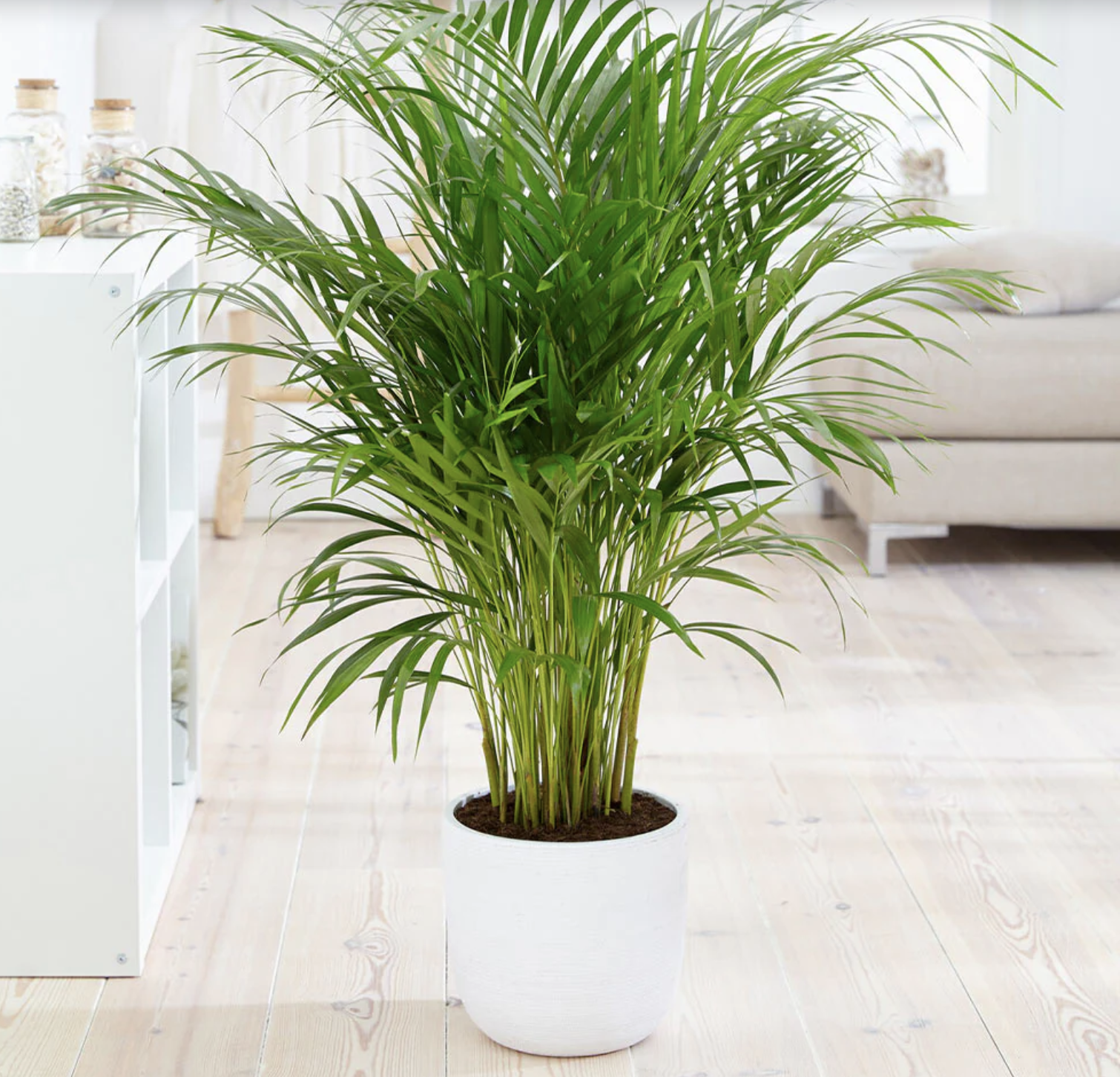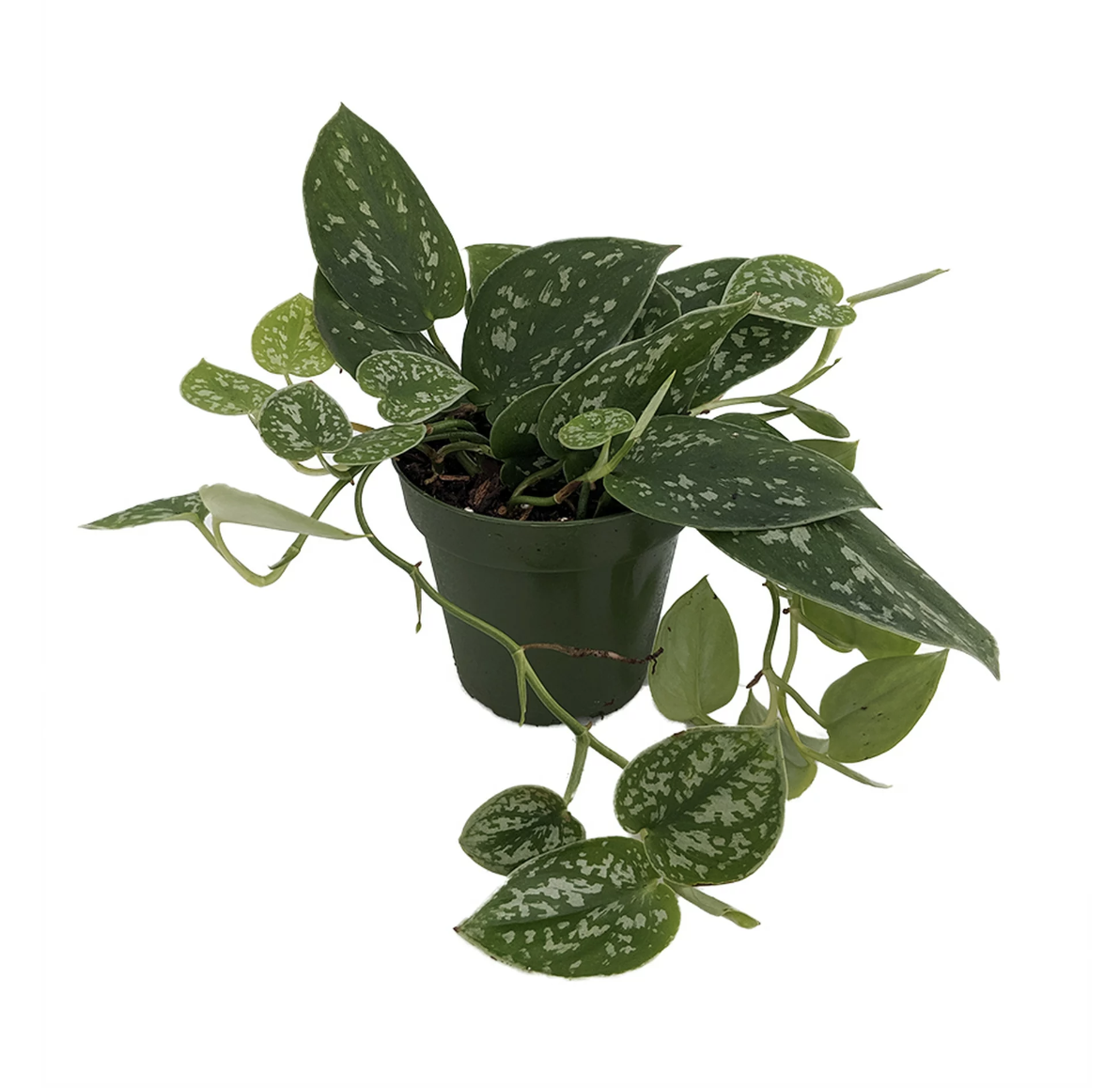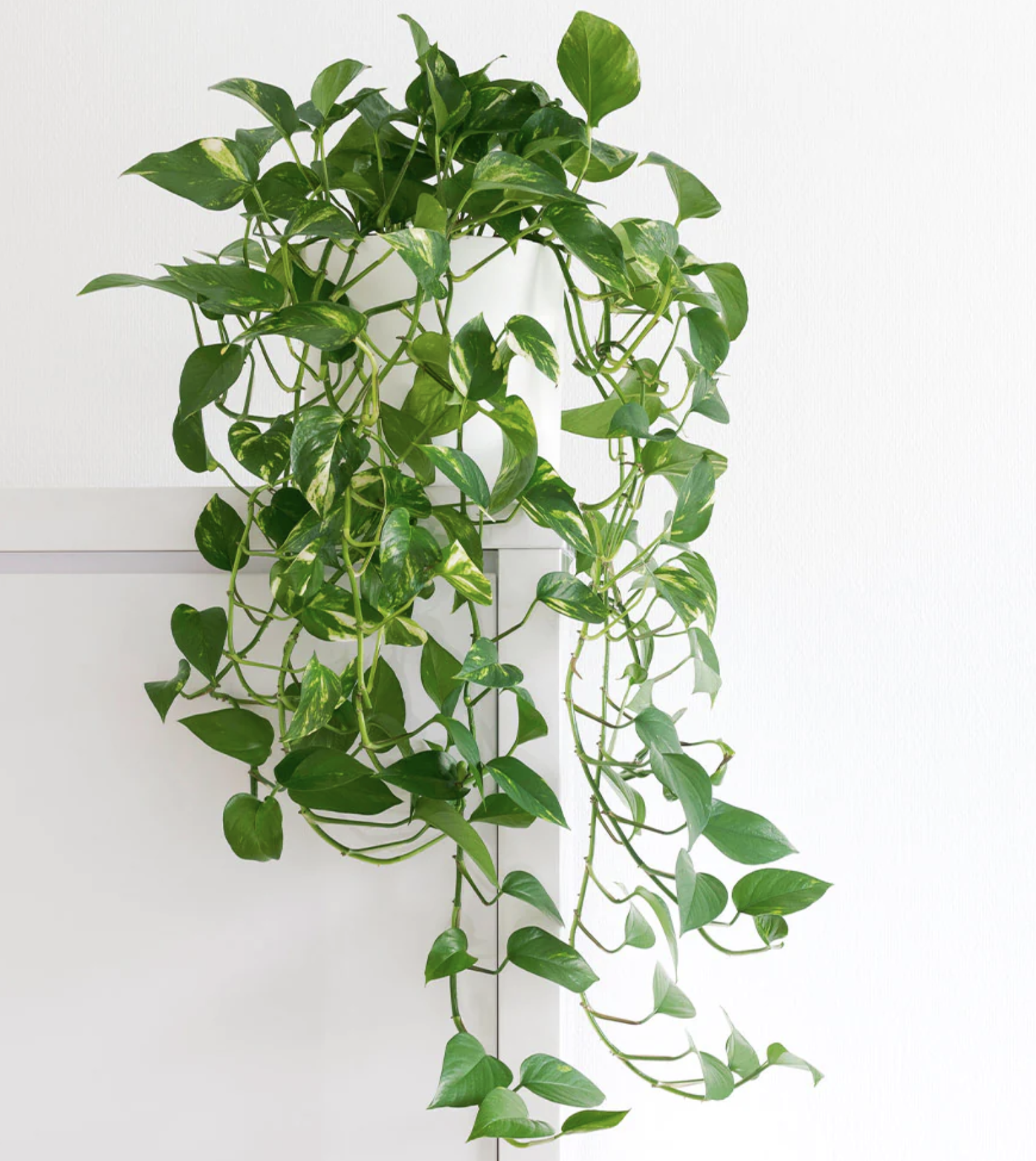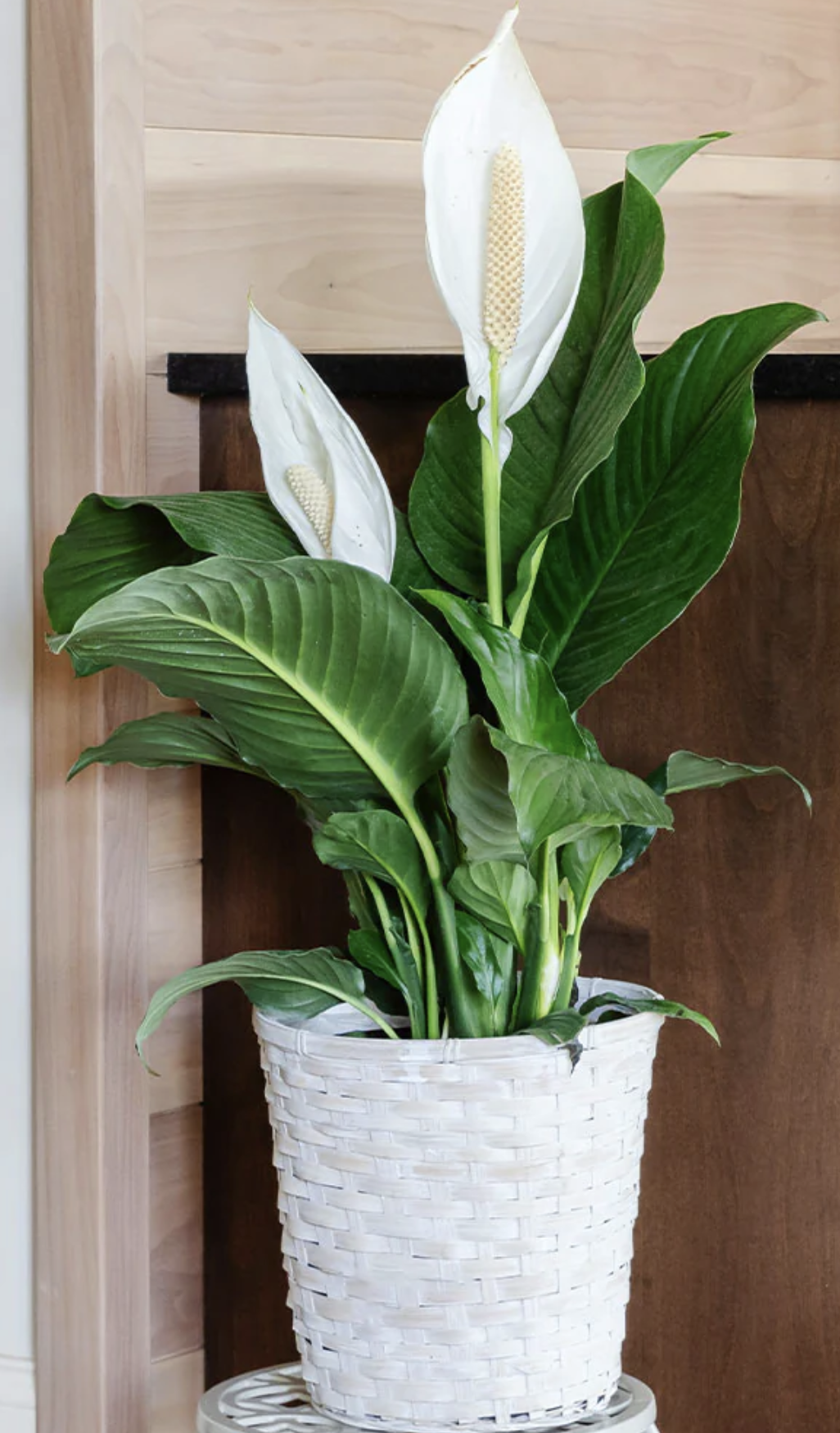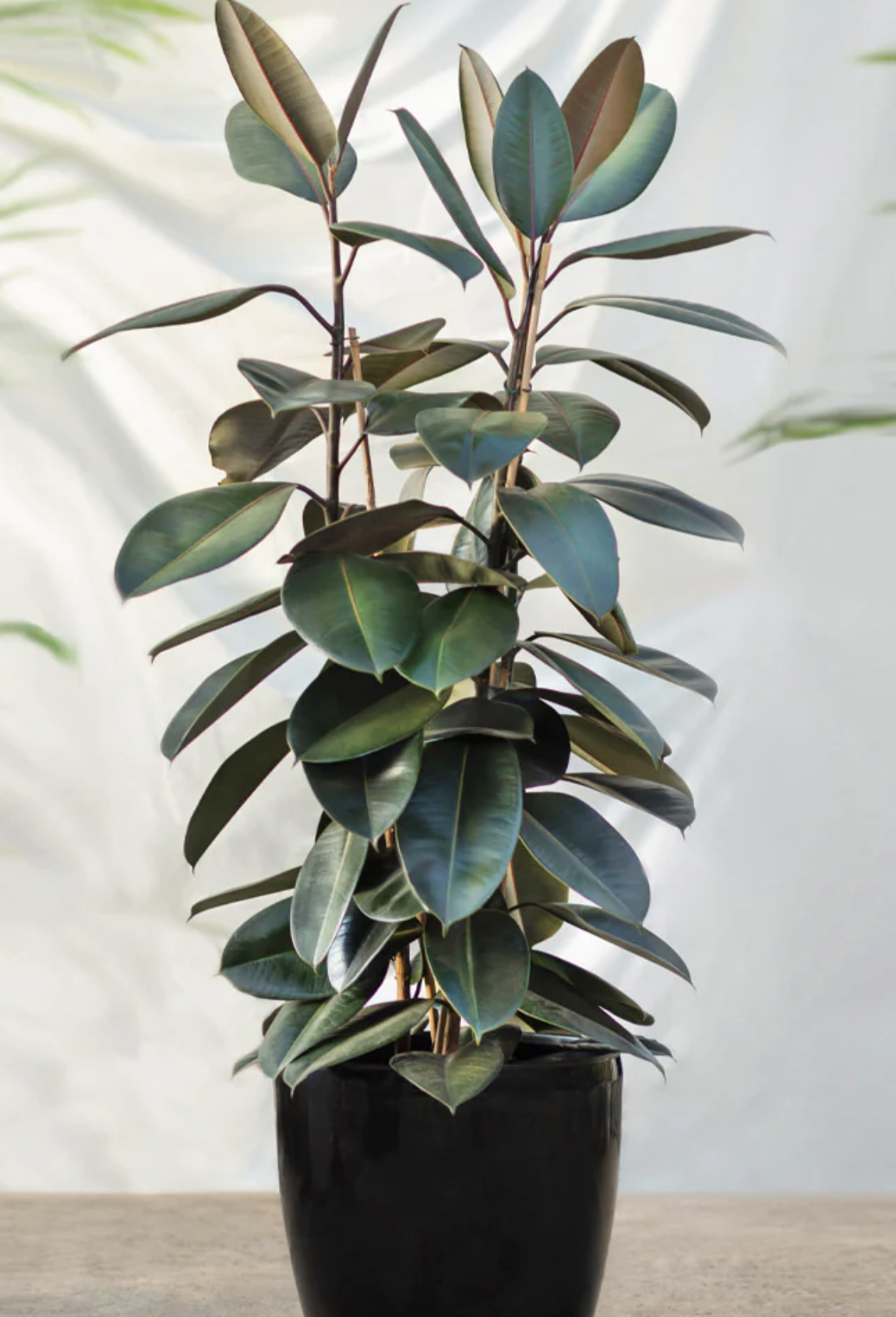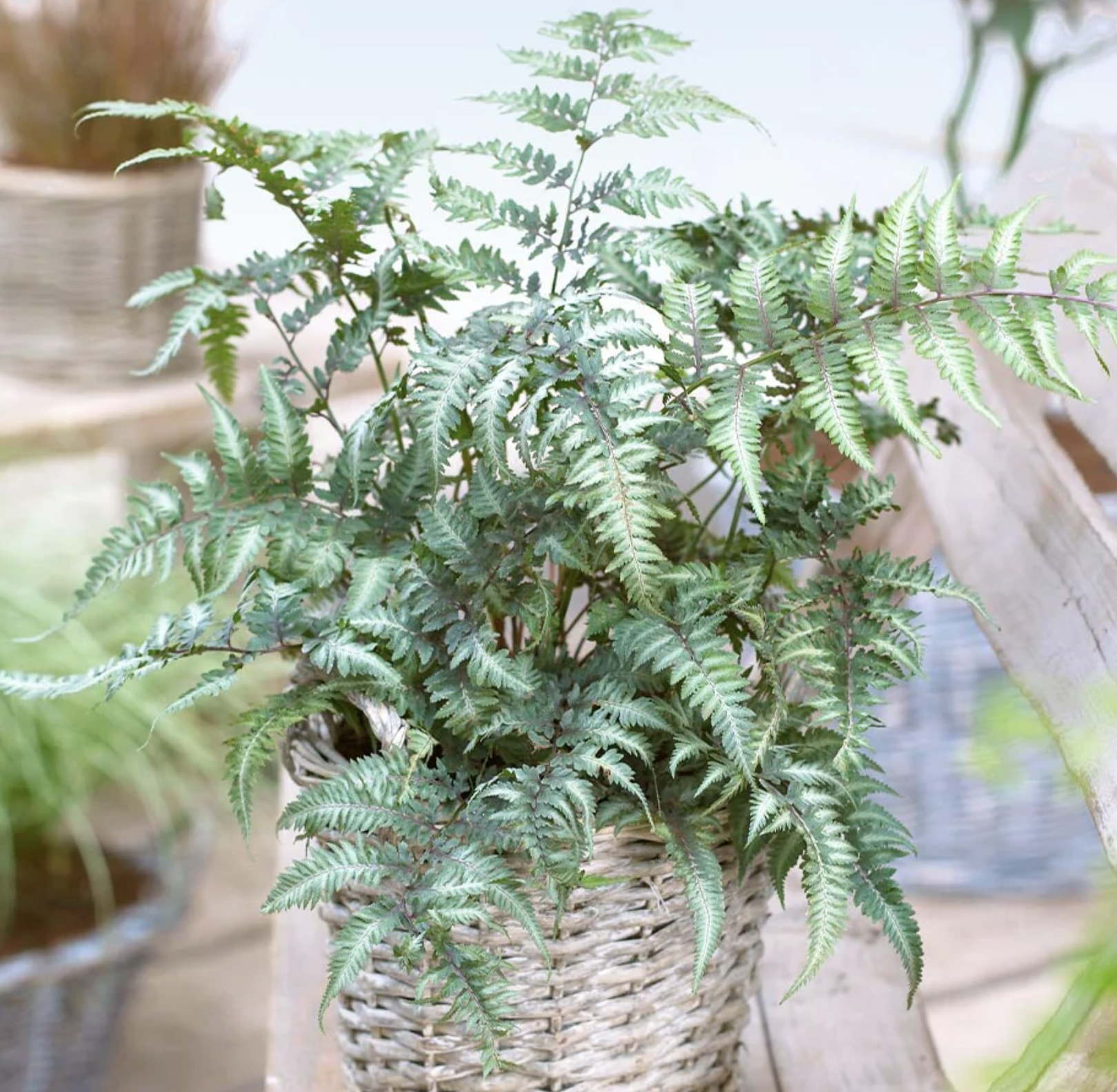What plants are best for a lush indoor garden? Experts pick the 10 best to give you an exciting jungle feel
Experts advise the best plant for a lush indoor garden and how to style and care for them. Your house can be a jungle in no time

Call it the Hilton Carter effect - indoor houseplants are having more than a moment in the sunshine. So if you're called to emulate this verdant look, discover which plants are best for a lush indoor garden.
'If I was to stand back and look at it from a bird’s-eye view, I guess I would describe my style as “modern lush”,' says Hilton Carter, in his latest book, Living Wild published by Cico. 'Ok, that may not be a style you’re familiar with, but I’m making it a thing,' adds the plant enthusiast.
It certainly is a thing. Since Hilton Carter burst onto instagram over a decade ago, plant popularity has boomed. With grammers posting pics of their own lush indoor gardens, green continues to be the new black in modern homes.
Hilton's latest tome, Living Wild, delves into plant styling and how to make the right choices for your home. Here, he and our other green-thumbed experts outline which plants are best for a lush indoor garden.
10 best plants for a lush indoor garden
Creating a lush indoor garden requires healthy plants that will thrive in their surroundings - ideally conditions that can best resemble their original home.
'In my first book, Wild at Home, I discussed three plant-styling methods that replicate the way we interact with plants in nature: levels, layering, and grouping. In the wild, we see greenery at a variety of different levels—at our feet, at eye level, and above,' says Hilton Carter.
'Indoors, creating the same effect requires hanging plants and planters, placing plants on tables or pedestals, and styling plants on the floor. Layering plants harks back to the way they grow in nature. Different species grow on top and alongside one another, creating what we understand as a “jungle.”'
1. Fiddle-leaf fig (ficas lyrata)

Native to tropical parts of Africa, this fast-growing plant thrives in warm, wet conditions. They've become a design trend, a key part of decorating with plants and seen in many a stylish home featured in Livingetc. So called due to its fiddle shapes leaves, Fiddle-leaf figs appreciate a regular mist as they absorb water through their leaves, as well as their roots.
Place them in a bright spot (away from direct rays) and rotate them regularly to ensure even leaf growth. As with other large-leafed species, a regular dust will also help them to photosynthesise - they're one of the best trees to grow in pots as they're so easy to look after.
'When you have a room full of light, you can style almost any plant there,' says Hilton. 'I started by placing Frank, my fiddle-leaf fig, in the right corner of our sunroom. Because of his size and shape, he is the statement plant there.'
2. Spider plant (Chlorophytum comosum)
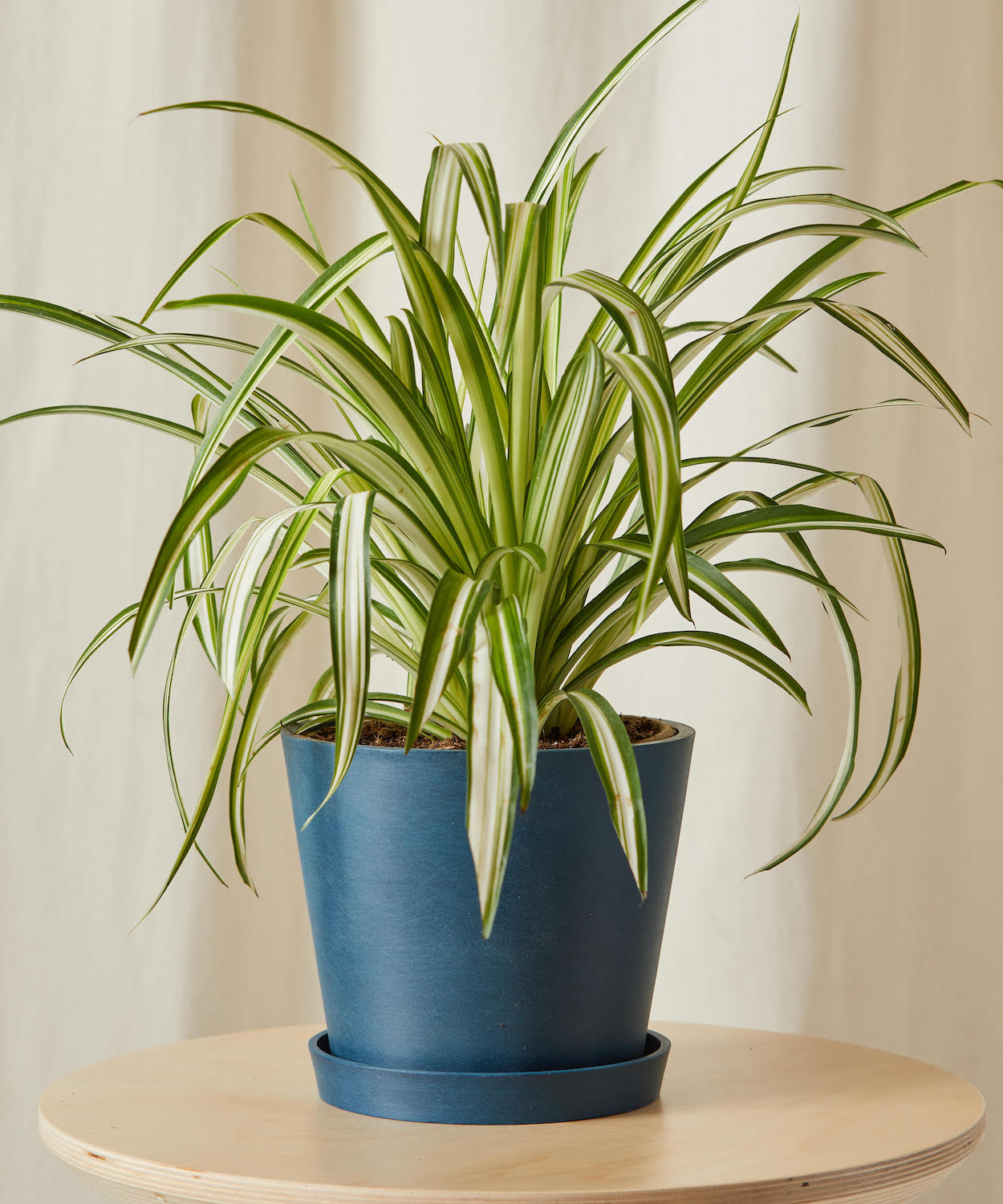
Easy to cultivate and able to tolerate some neglect, spider plants are a good option for newbies, busy people and pet parents (as they're non toxic to dogs and cats). Once mature, they'll spawn spiderettes (baby plant offshoots) at the end of their leaves, which can be replanted.
They're great for creating jungle-like layers too, as they can be hung from on high or placed on a shelf to trail. They're also perfect for when it comes to how to turn your windowsill into an indoor garden, too. They're happy anywhere.
'There are many different ways to define lush and we love bringing green into all parts of the home,' says Alex Bates, co-founder of Bloomist. 'It really depends on your space and light source. Dramatic statements can be made with easy-care trailing Spider plants - yes that 70’s favorite is back!
'Team Spider plants with Boston Fern and trailing Pothos hanging around a small bathroom window or a stair landing. We think sticking with one pot collection in a range of sizes makes urban jungles look a little more intentional and cohesive. This way the planters recede and play a supporting role to the wild mix of leaves and flowers.'
3. Monstera deliciosa
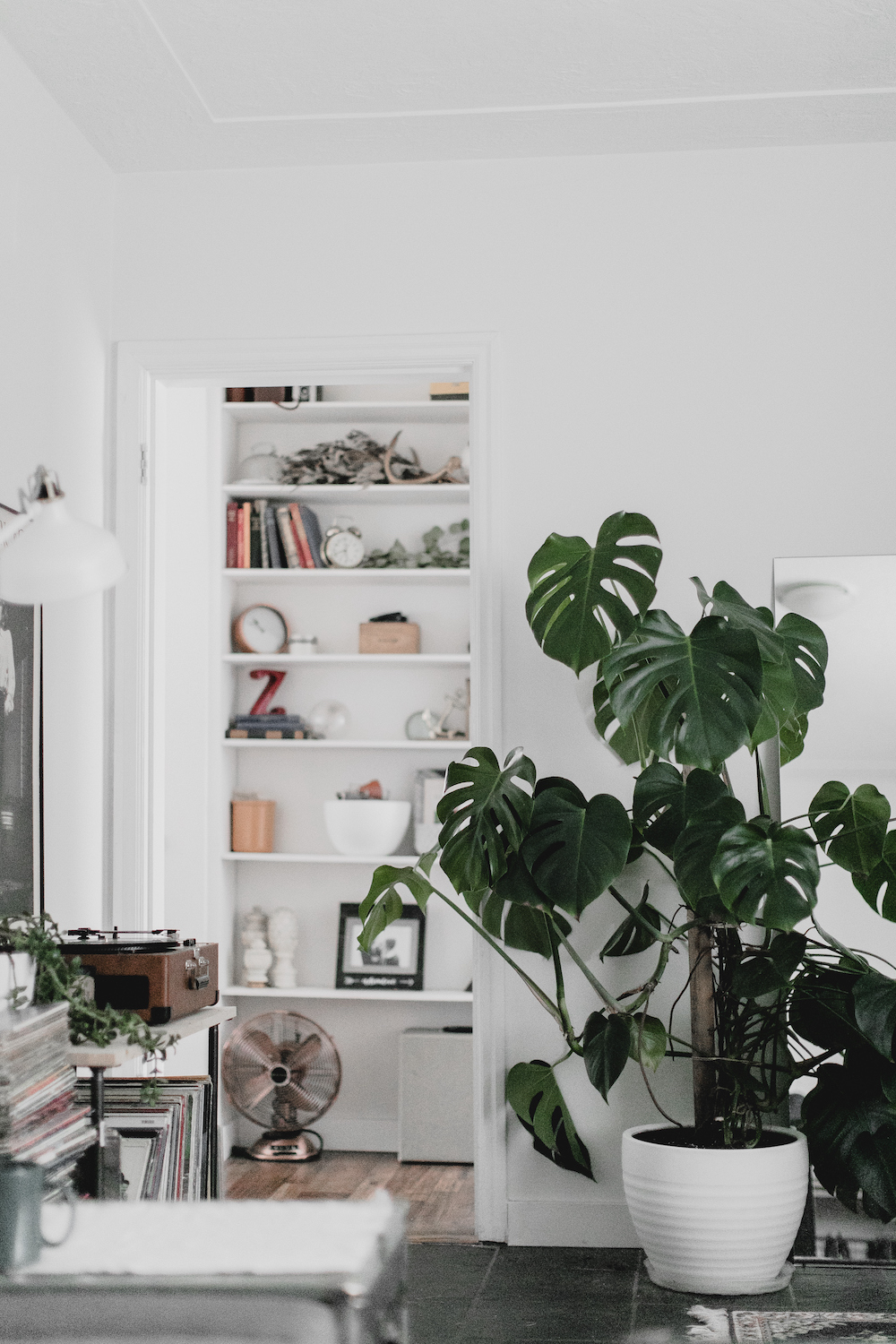
Another trending 70s revivalist houseplant is the Monstera deliciosa. Also known as the Swiss Cheese Plant, it's a popular choice for bringing a tropical touch to interiors. This light loving plant grows fast and is a rewarding addition as it also happens to be one of the best low maintenance plants for an indoor gardening.
'Monstera deliciosa's large, uniquely perforated leaves create an eye-catching statement and are reminiscent of tropical rainforests,' says Nick Sandford, founder, Leaf & Clay. 'It is relatively easy to care for, making it ideal for indoor gardeners.
'Monstera prefers bright, indirect light and well-draining soil. Water the plant when the top inch of soil feels dry, and be sure to provide adequate humidity by misting the leaves or placing a tray of water nearby.'
'The Monstera grows upwards and outwards, making it a good match for bright, open spaces,' says Lindsay Pangborn, plant expert at Bloomscape. 'Add a moss pole to support its climbing habit and direct the growth upwards.'
This bendable moss pole from Amazon would suit.
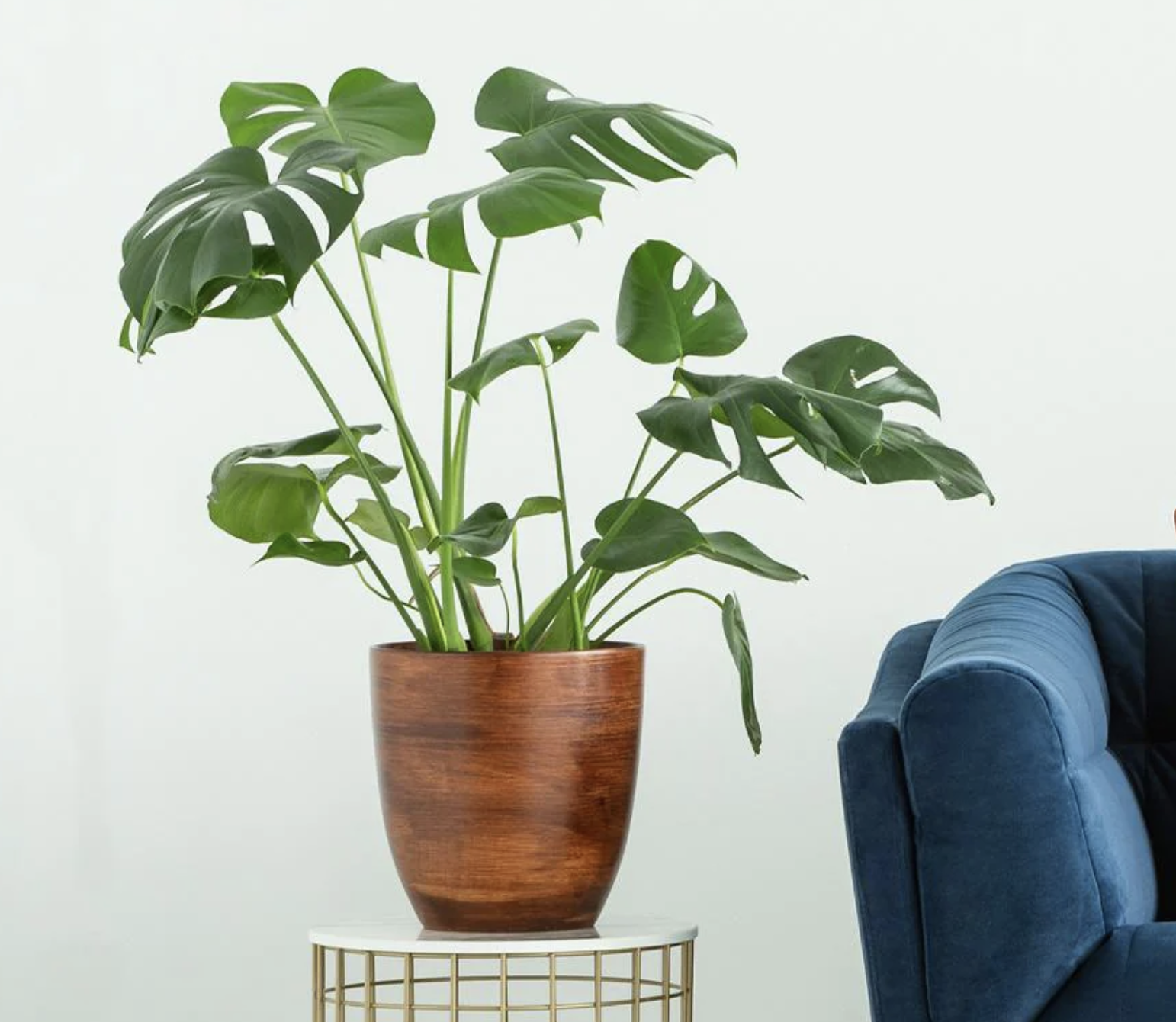
Such a stunning architectural shape, this 70s plant is having a revival.
4. Bird of Paradise (Strelitzia)
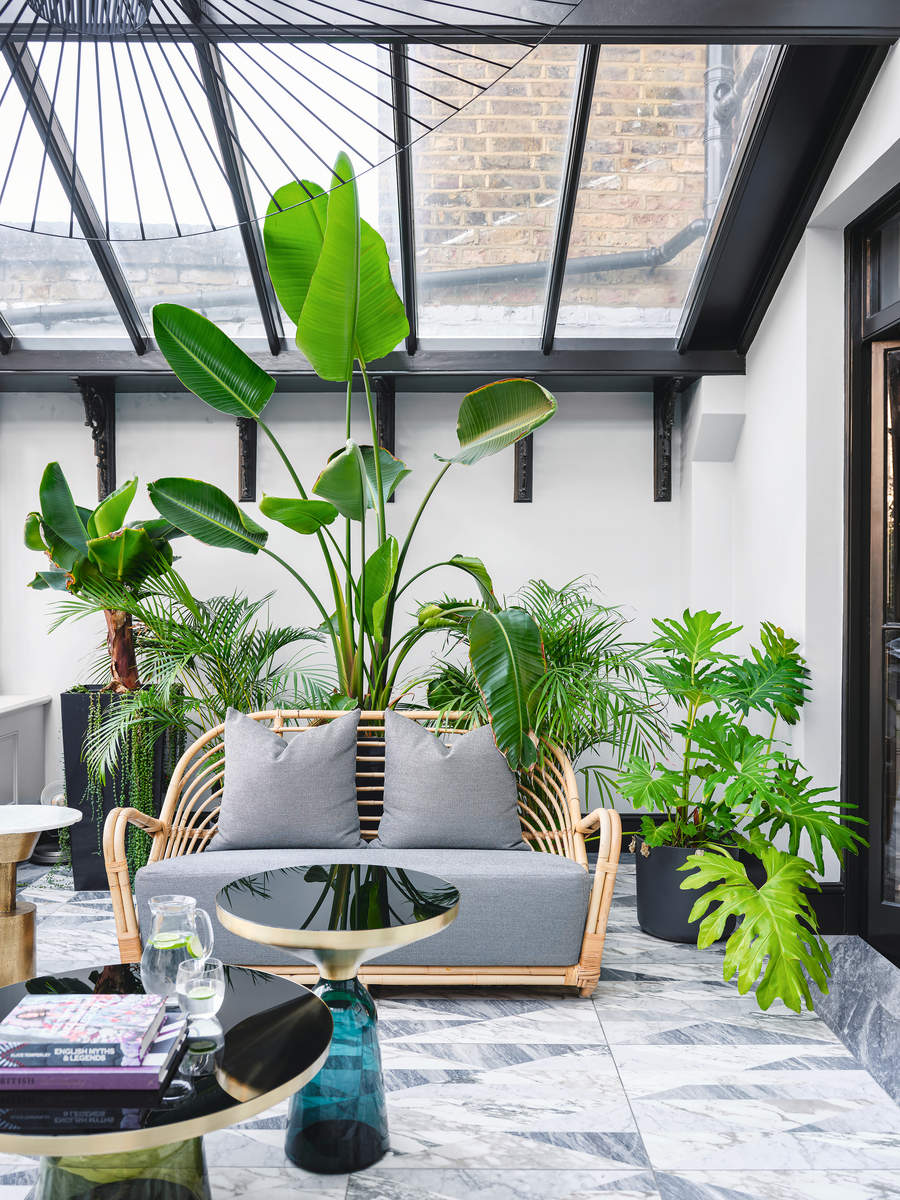
Hailing from South Africa, where it receives plenty of light and warmth, the Bird of Paradise, or Strelitzia, will grace your home with lush tropical vibes. Standing tall with large majestic leaves, it will flourish in a sunny spot. The plant in the picture above isn't flowering, but when it does it's a fluro pop of orange and sliver of purple.
'Its stunning paddle-shaped leaves add a dramatic touch to any space,' says Nick at Leaf & Clay. 'Bird of Paradise plants are relatively low-maintenance but do require specific conditions to thrive.
'They prefer bright, indirect light and consistent temperatures between 65-75°F. Water your Bird of Paradise regularly, allowing the soil to dry slightly between waterings, and like the Monstera, provide humidity through misting or a nearby tray of water.'
'The Bird of Paradise can thrive indoors all year round with its large, glossy leaves that make an impactful statement. Bright light and occasional dusting will keep this plant happy,' says Lindsay Pangborn at Bloomscape.
5. Butterfly (or Areca) palm
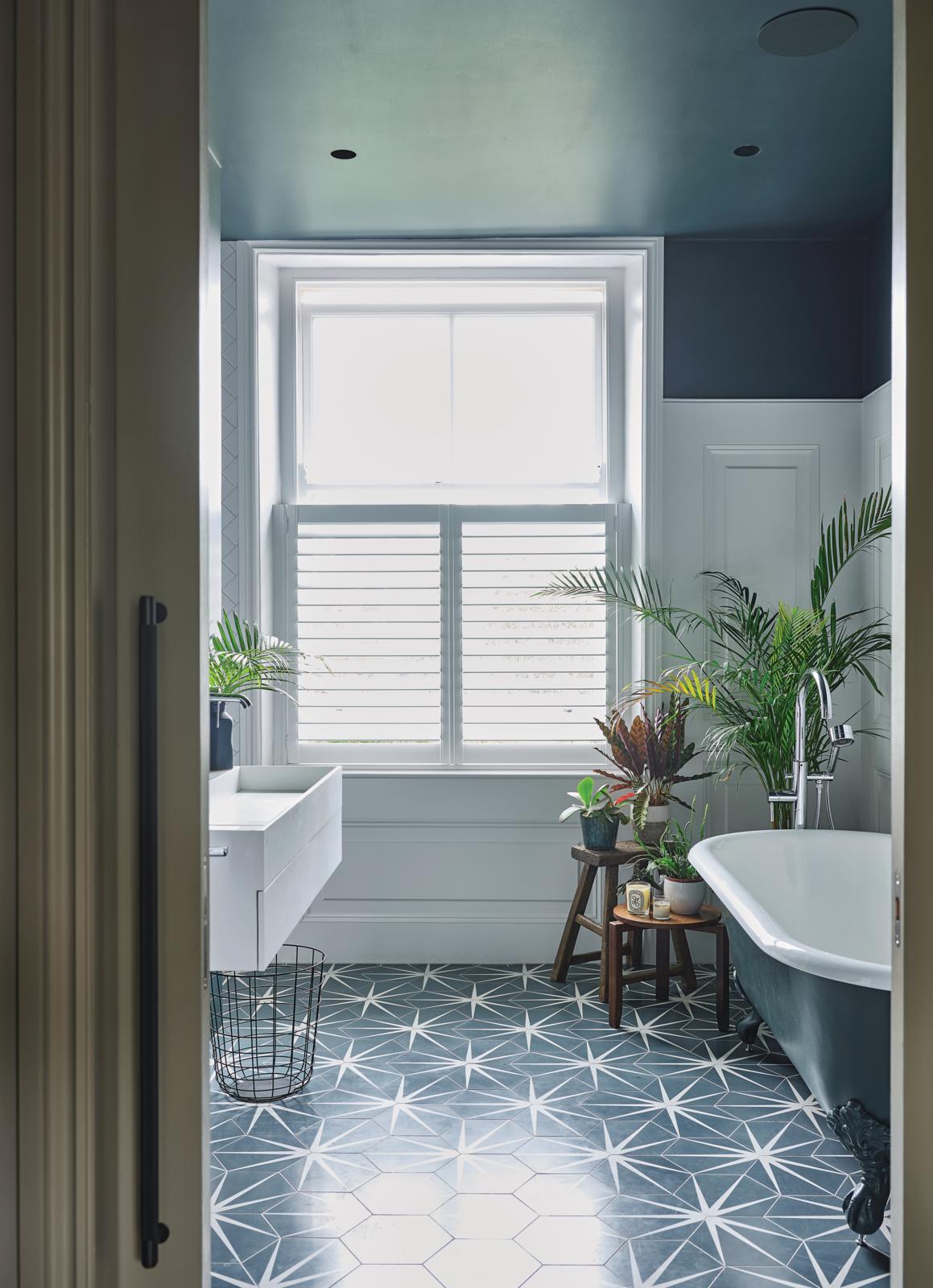
Originally from Madagascar, Butterfly (aka Areca) palms have more than a flavour of paradise about them. Popular in the Art Deco interiors of the grand cafes a century ago, these plants exude elegance placed in a bright corner on their own.
For an urban oasis, team a floor level palm tree with smaller plants at different heights to create a cluster of greenery.
'I play around with plants to form a tiered effect, so they can all be seen and also to ensure that each one is easily accessible for proper care,' says Hilton Carter.
'Areca Palm, often referred to as the Butterfly Palm, is a graceful plant known for its feathery, arching fronds,' says Nick at Leaf & Clay. 'This palm instantly adds a tropical vibe to any indoor space. Areca Palms are relatively easy to care for, but they also have certain requirements to maintain their lush appearance.
'They thrive in bright, indirect light and should be kept away from direct sunlight, which can scorch the leaves. Water the Areca Palm regularly, allowing the soil to dry slightly between waterings, and maintain humidity in the same way as with Monstera or Bird of Paradise.'
6. Philodendron
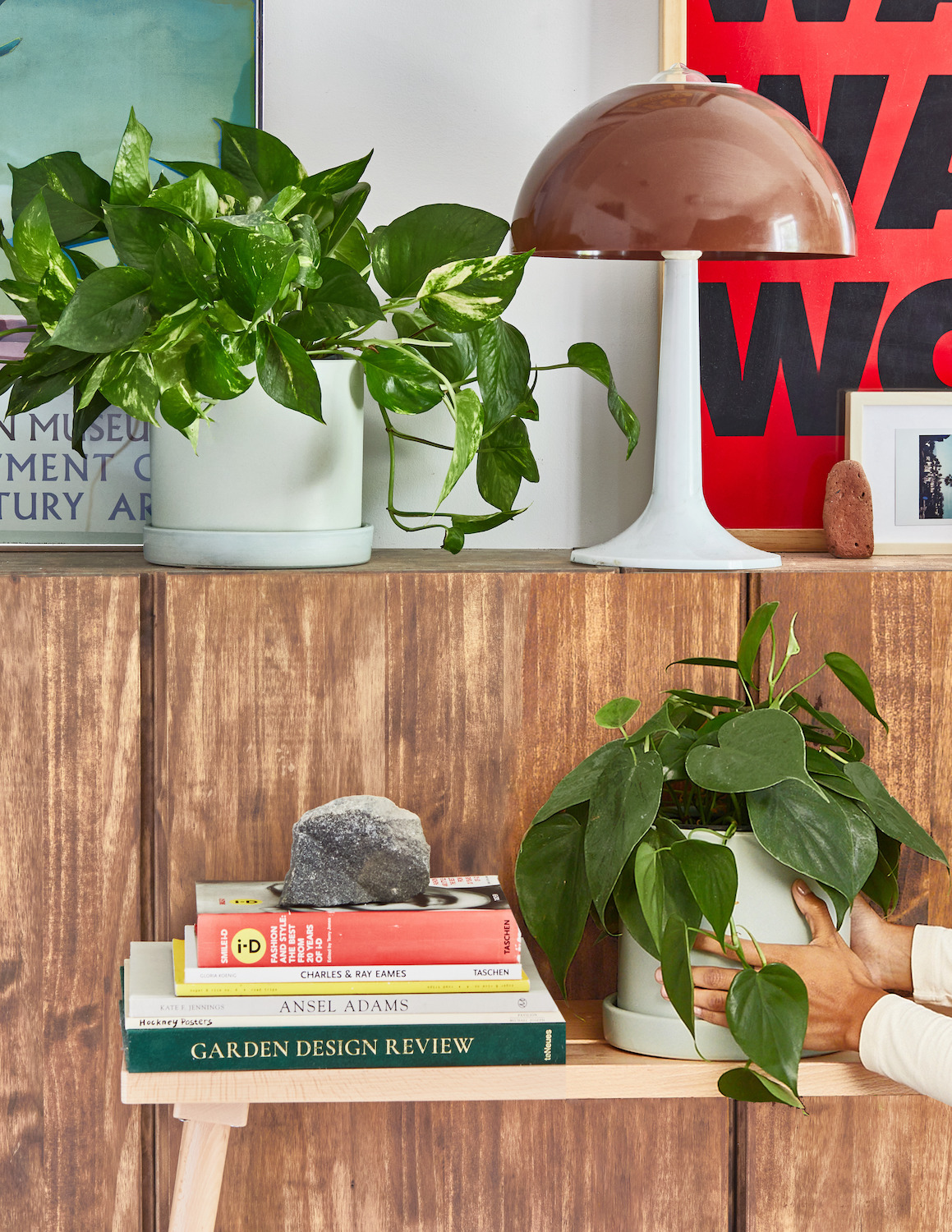
With its heart shaped leaves and quick-growing vines, Philodendron will slot easily into an urban jungle. It's a low maintenance houseplant, just requiring a water every week or two. And although it thrives in bright, indirect light, it can be one of the best houseplants for low light, too, tolerating dimmer spaces.
'The best way to create a lush indoor garden is to work with both small and large plants,' says Paris Lalicata, plant expert at The Sill. 'A combination of different plant sizes can help add diversity and dimension in a plant collection.
'Large plants are great to fill up a corner or space with just a single specimen such as a Fiddle Leaf Fig, Monstera deliciosa, Bird of Paradise or Dracaena species. Small to medium plants are great to fill up space on windowsills, coffee tables, and small side tables and stands to add a touch of greenery,' continues Paris.
'Trailing plants like Philodendron and Pothos are great for shelves and hanging planters as their cascading vines can be trained along walls or moldings to create the feel that these plants naturally belong.'
'We love the drama of Tree Philodendrons to create a lush indoor garden,' says Alex Bates, founder of Bloomist. 'They can grow to 15 feet and their wild leaves quickly create a lush jungle atmosphere.'
7. Devil's ivy (Pothos)
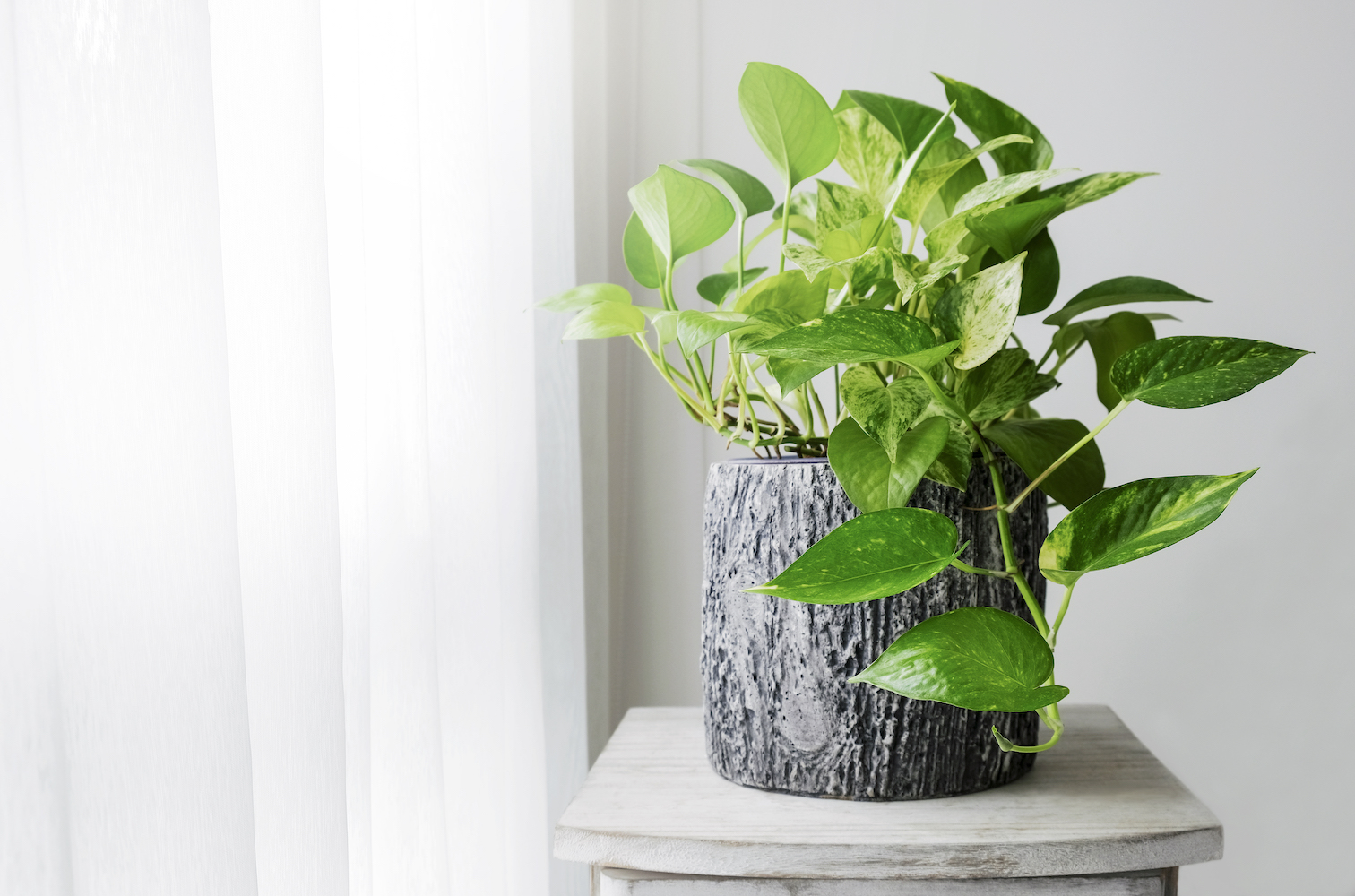
Pothos is another of our plant experts' favorite foliage for lush indoor gardens. Similar in looks and requirements to the Philodendron, Pothos often has pretty yellow markings on its leaves, particularly the Golden Pothos and Marble Queen Pothos, which is an easy way to distinguish the difference between the two plants.
Easy to grow, Pothos will sit happily next to Philodendron, or even in the same planter or trough. It loves humidity too, so is one of the best houseplants for bathrooms. It will thrive in a steamy shower.. Pothos grows fast, so be aware if you have furry friends that may want to claw its trailing vines as it (and Philodendron) is toxic to pets.
'We love Gold Devil for its yellow-green leaves,' says Alex at Bloomist. 'We recommend Greenwash Studio terracotta pots to go with the yellow-green tinged leaves. Mix in a few plants more with dramatic foliage to punch up your mix.'
'Bringing vine plants into areas of the room where they can gracefully trail down is a great way to make a corner more interesting or to hide a spot that you’re less excited about,' says Hilton Carter. 'I draped vine plants around our living room, from a satin pothos (Scindapsus pictus ‘Argyraeus’) and variegated Hoya carnosa on the mantle to a marble queen pothos (Epipremnum aureum) on the cabinet.'
8. Peace lily (Spathiphyllum)
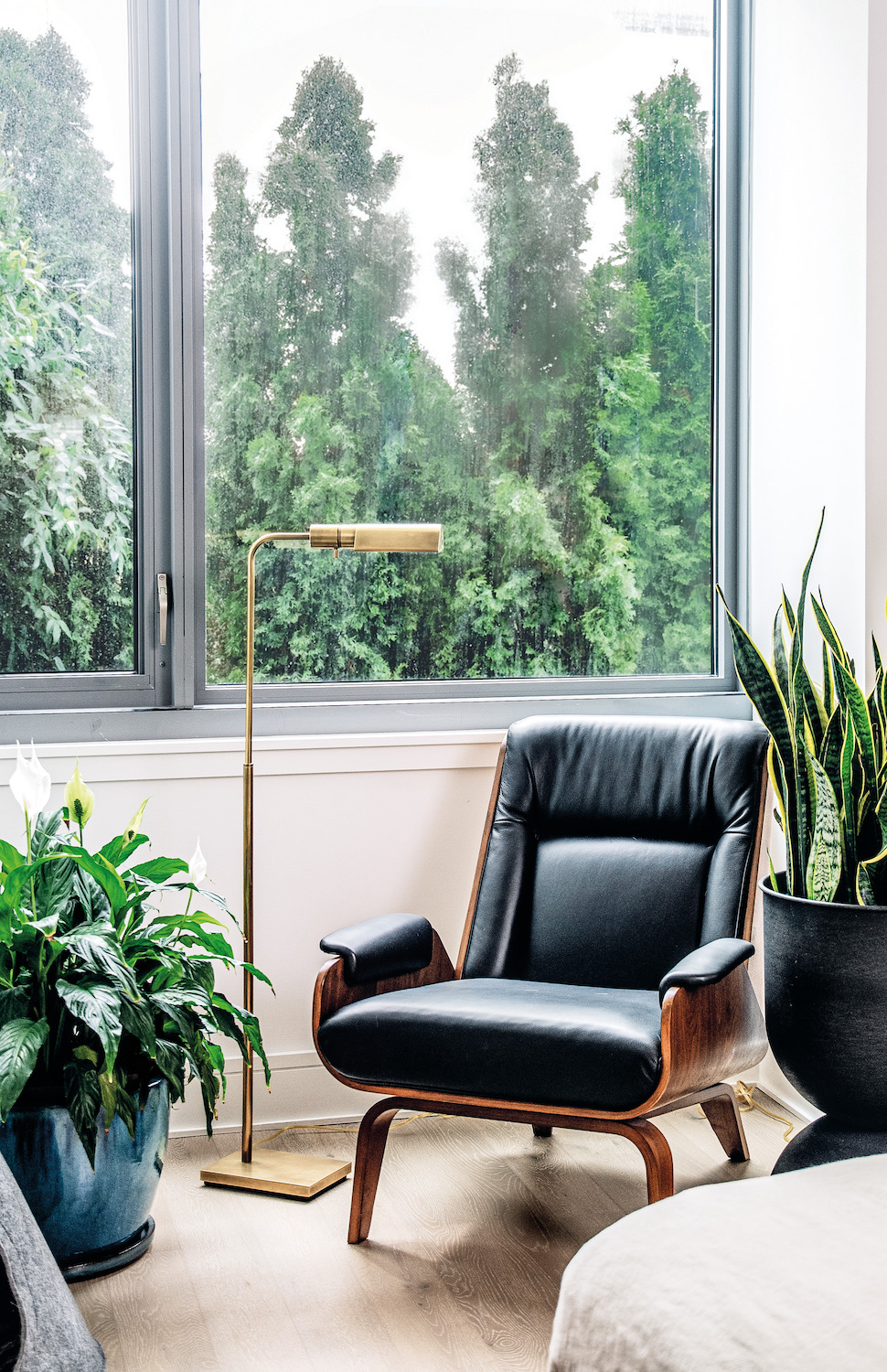
For those embarking on an indoor jungle journey, this houseplant is a must-have. Loved for its broad, glossy leaves and minimal requirements, the Peace lily is super easy to care for and will reward you with pretty white blooms (called spathes). It's also one of the best plants for an indoor zen garden - the clue is in the name. And not only that, it will remind you when it needs watering by dramatically wilting - yet it will soon perk up again once it's had a good drink.
'The iconic Peace Lily is another favorite for those interested in a flowering plant with oversized, lush leaves,' says Lindsay at Bloomscape. 'Symbolizing prosperity, purity, peace, and sympathy, the Peace Lily has soft white blooms that contrast beautifully against its deep green leaves.'
9. Rubber tree (Ficus elastica)
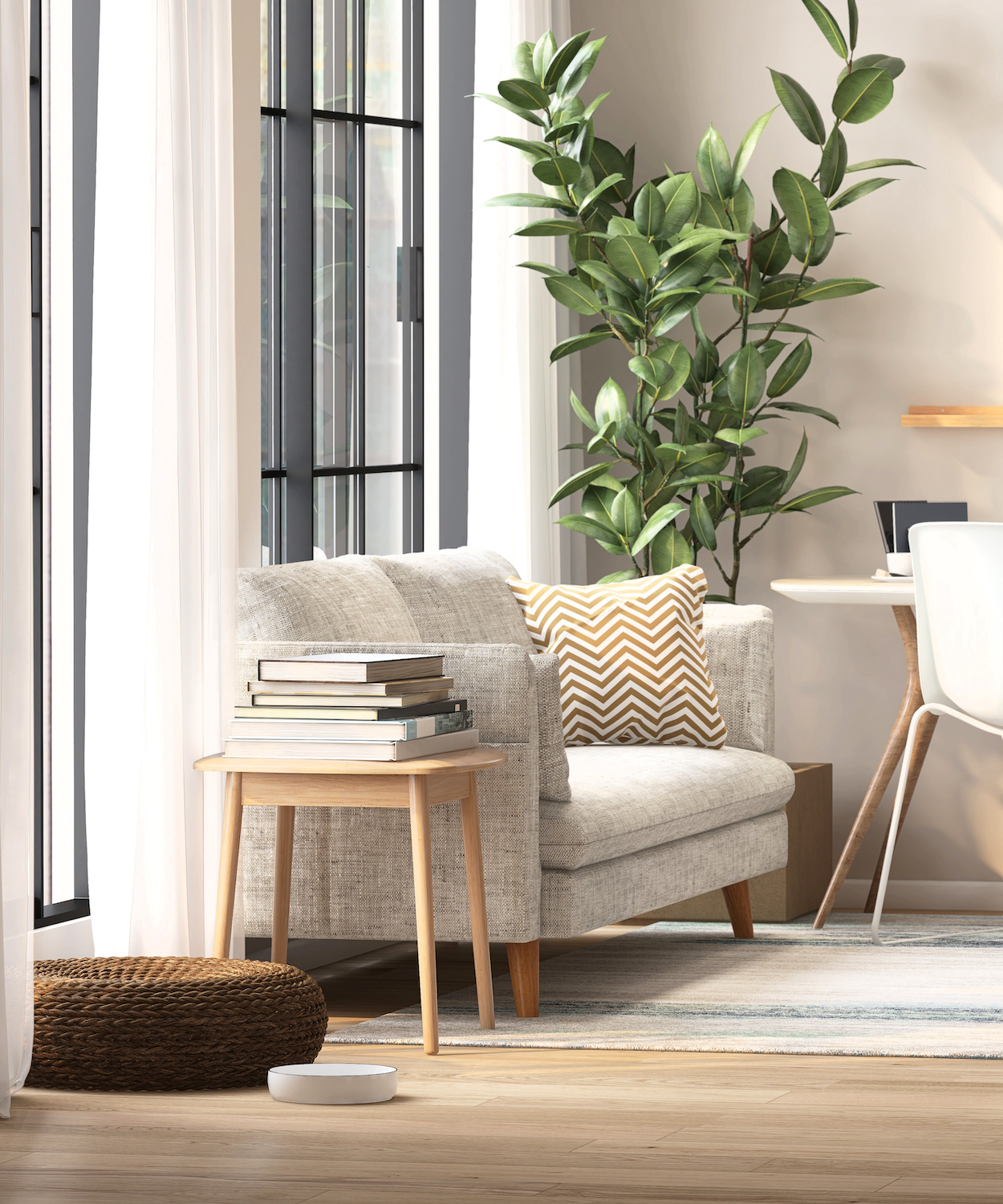
Originally growing wild in rainforests in India and South America, this strong and sturdy plant can grow up to 6-8 foot tall in the right indoor conditions. It doesn't like change so find a good spot with bright, indirect light for a Rubber tree from the off. Its dark glossy leaves will add an extra dimension to your indoor garden.
Just water a Rubber plant or tree weekly and pour slowly, so the water soaks in, then discard any excess in the saucer. It's toxic to pets, so make sure your Rubber tree is not placed where it can be chewed.
'Just as the colors in your plants should vary, the same goes for their textures,' says Hilton Carter. 'Styling a Rubber tree (Ficus elastica) next to a Philodendron rugosum will bring the best out of both plants.
'While the leaves of the rubber tree have an almost patent-leather sheen, the rugosum is rugged and leathery. Experimenting with different textures in this way will create a sense of depth in any area of your home. There’s a push and pull that will occur, a dynamic contrast that makes the space vibrate.'
10. Ferns
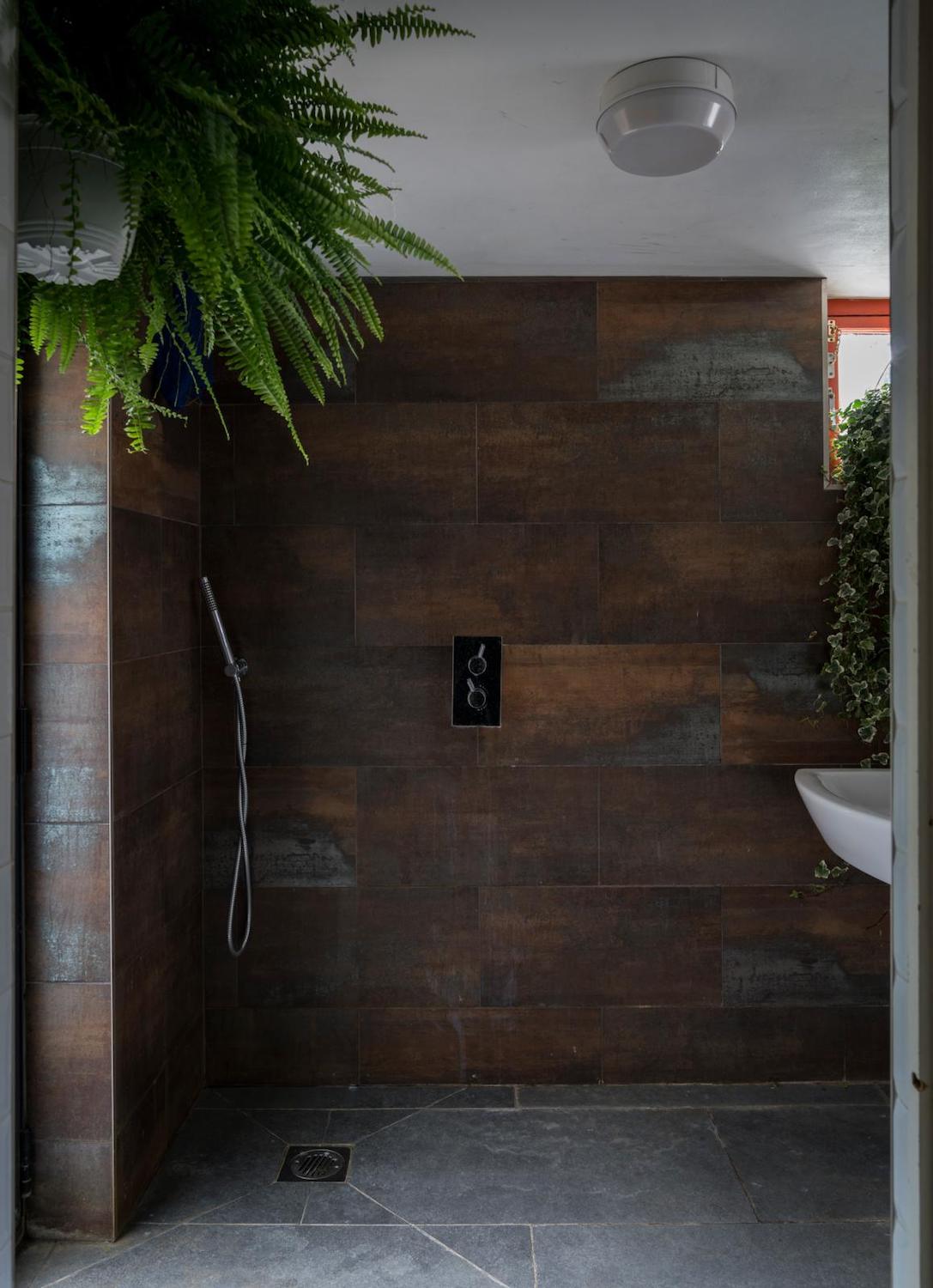
Moisture and heat-loving ferns thrive in tropical rain forests, so naturally lend themselves to lush indoor gardens. There are many different types of fern cultivated as houseplants, with Boston, Maidenhair, Blue Star, Asparagus and Kangeroo ferns, being among the most popular. These plants generally do well in warm, humid bathrooms or kitchens, where there is sufficient (indirect) light.
'The Kangaroo Fern’s interesting leaves bring a whimsical, playful feel to this plant,' says Lindsay Pangborn at Bloomscape. 'It also develops long fuzzy roots, known as rhizomes, that can grow over the sides of the pot, which offer extra texture. An easygoing plant, the Kangaroo Fern is one of the lower-maintenance fern options.'
Boston, Blue Star, Asparagus, Japanese and Maidenhair ferns will all offer a lush look too, providing they have the right conditions. As ferns generally grow on the forest floor, they tend to like partial shade but don't let them dry out or place them near draughts.
Give ferns a generous weekly water, discarding any excess water that drains into the saucer and try to avoid touching their delicate fronds. They'll appreciate a monthly feed with liquid fertilizer (diluted to half the recommended strength) through spring and summer. These are also good plants for pet parents, as they're non toxic.
Be The First To Know
The Livingetc newsletters are your inside source for what’s shaping interiors now - and what’s next. Discover trend forecasts, smart style ideas, and curated shopping inspiration that brings design to life. Subscribe today and stay ahead of the curve.
Jacky Parker is a London-based freelance journalist and content creator, specialising in interiors, travel and food. From buying guides and real home case studies to shopping and news pages, she produces a wide range of features for national magazines and SEO content for websites
A long-time contributor to Livingetc, as a member of the team, she regularly reports on the latest trends, speaking to experts and discovering the latest tips. Jacky has also written for other publications such as Homes and Gardens, Ideal Home, Red, Grand Designs, Sunday Times Style and AD, Country Homes and Interiors and ELLE Decoration.
-
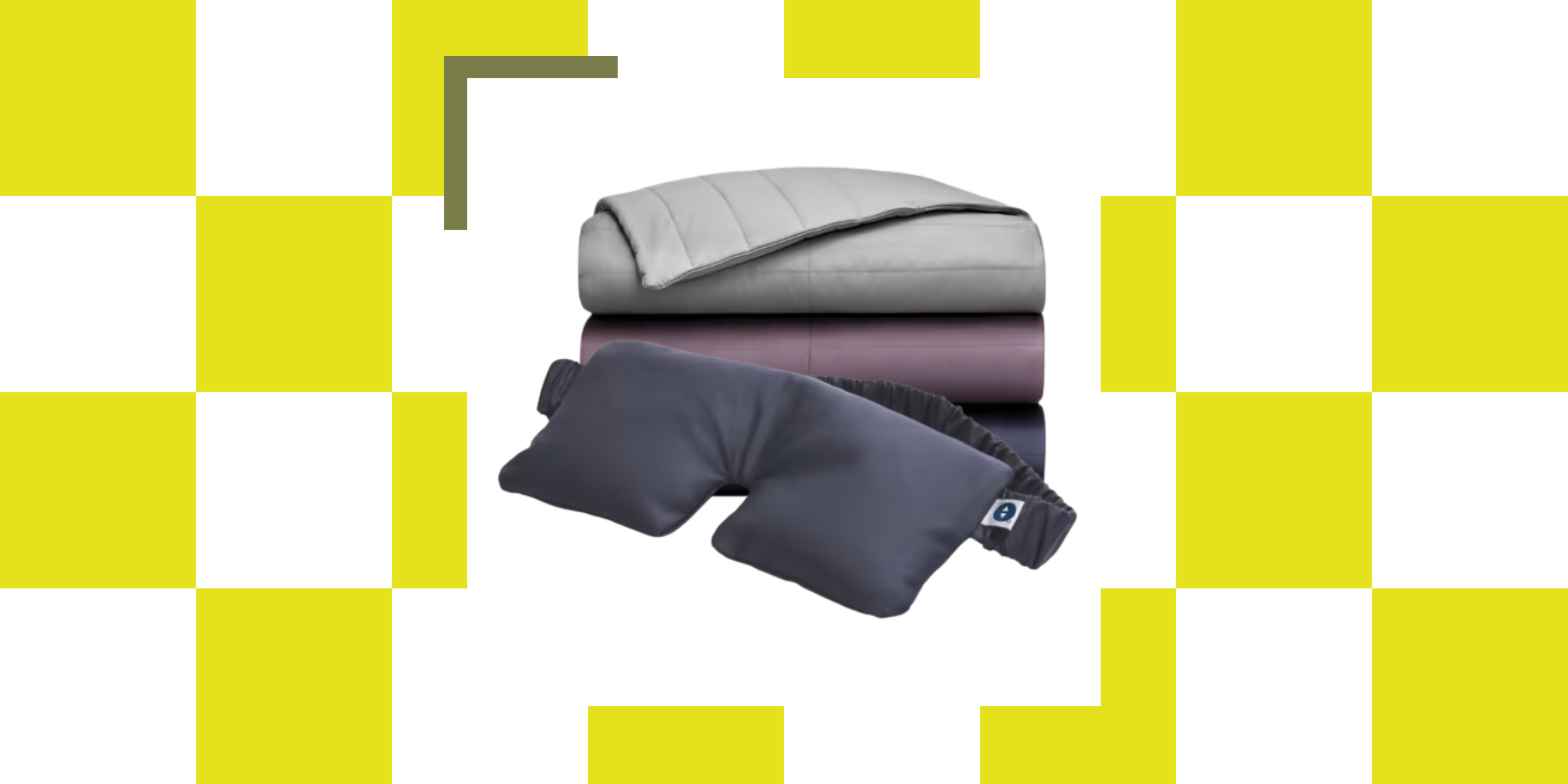 The Weighted Blanket That Doesn’t Make You Sweat (and the Eye Mask to Match)
The Weighted Blanket That Doesn’t Make You Sweat (and the Eye Mask to Match)Luxury has weight. And apparently, volcanic minerals
By Julia Demer
-
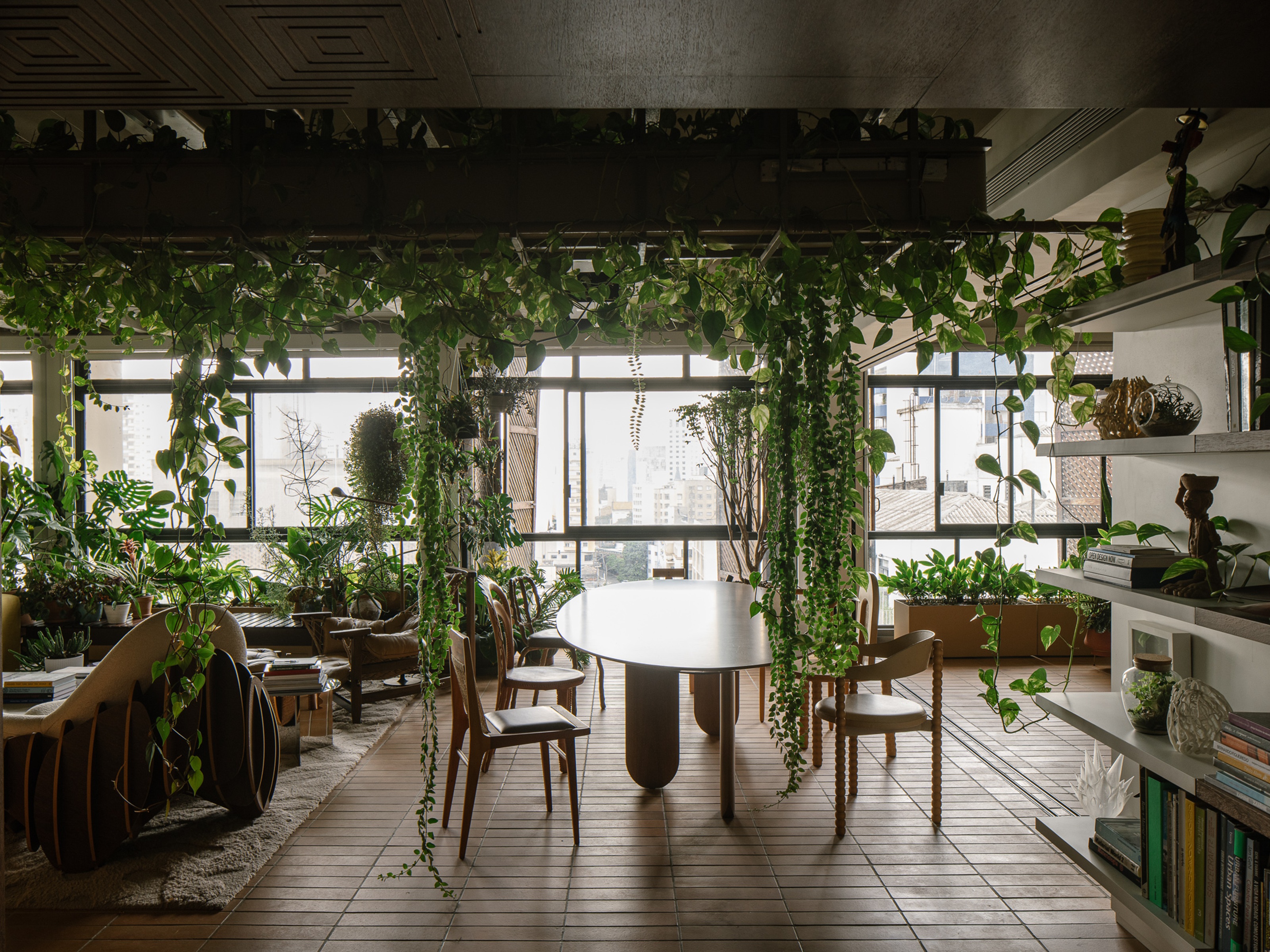 What Is Biophilic Interior Design? I'm an Actual Biophilic Designer, and This Is How to Apply It to Your Home
What Is Biophilic Interior Design? I'm an Actual Biophilic Designer, and This Is How to Apply It to Your HomeA biophilic designer explains the core principles of this practice, and the easy ways you can apply it to your home's design
By Marianna Popejoy
